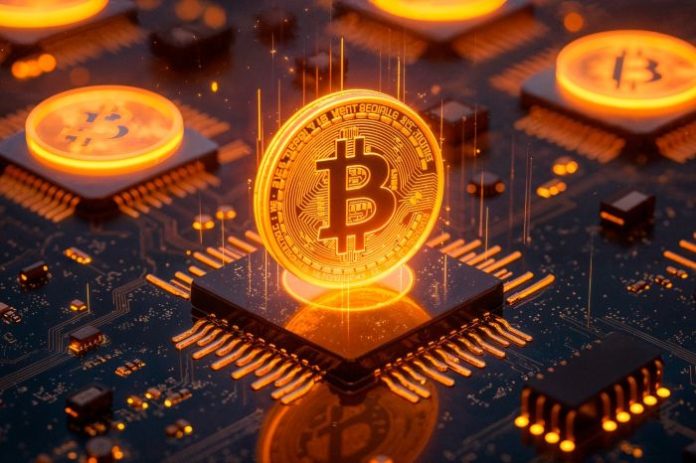Bitcoin is the cryptocurrency people most often mean when they say “crypto.” It’s often the first Bitcoin that newcomers aim to acquire. It remains the largest digital asset by market share. Bitcoin is widely used as a reference point across the space — from developers building new layers to services adding Bitcoin rails. As of mid-November 2025, Bitcoin’s share of the overall crypto market capitalization has been near 59% in many market snapshots. This underlines its central role in the ecosystem.
Below are five concrete — and very different — paths to obtaining Bitcoin. Some require technical knowledge, time, or specific tools. Others rely on participation in particular digital services like Bintense, a regulated crypto exchange. Each route has been used by real people or communities and is backed by documented examples and statistics.
Key Takeaways
- Bitcoin is the largest cryptocurrency, comprising about 59% of the market share, and serves as a pivotal reference point within the ecosystem.
- There are five main paths to obtain Bitcoin: mining, claiming from historical forks, participating in faucets, earning through gaming apps, or buying on exchanges like Bintense.
- Mining requires specialized hardware and careful planning; it’s complex and has largely shifted to industrial-scale operations.
- Faucets and micro-task services allow users to earn small amounts of Bitcoin for completing simple online tasks, although it requires persistence.
- Purchasing Bitcoin on exchanges, particularly Bintense, offers a straightforward approach using standard payment methods like cards or bank transfers.
Table of Contents
- Mine Your First Bitcoin Yourself (Hardware + Protocol Participation)
- Claim Coins From Historical Forks and Similar Distributions
- Participate in Micro-Tasking, Faucets, and Reward Programs
- Receive Your First Bitcoin Through Gaming and Lightning-Native Applications
- Buy Bitcoin On An Exchange: Bintense By Card Or Bank Transfer
- Final Thoughts
Mine Your First Bitcoin Yourself (Hardware + Protocol Participation)
Mining is the original way new Bitcoin is put into circulation. Machines compete to add blocks to the Bitcoin ledger. They are compensated with newly minted Bitcoin plus transaction fees. Mining today is performed almost exclusively with specialised hardware (ASICs) and run by dedicated operators and mining pools. The total computational power securing the network is enormous and publicly tracked. For an idea of scale, the Bitcoin network’s aggregate hash rate — the combined computing power of all miners — is published and updated daily on major blockchain data sites.
Practical note: Industrial-scale operations have mostly replaced individual hobbyist setups. In the past, these setups used general-purpose computers. Setting up a profitable home miner requires careful planning, like sourcing ASIC hardware and arranging sufficient and stable electricity. Often, this is at industrial rates. Other tasks include joining a mining pool and managing heat and maintenance. Mining also carries operational complexity. This includes coordination with pool software, firmware updates, and hardware lifecycle management, which many prospective participants underestimate. If this seems too complicated, explore other ways of getting Bitcoin. For example, Bintense, where you can buy this crypto with a card or bank transfer.
Claim Coins From Historical Forks and Similar Distributions
When a blockchain splits (a “hard fork”), holders of the original chain’s coins at the moment of the fork typically become eligible to claim coins on the new chain. The most widely cited example of this in Bitcoin’s history is the 2017 Bitcoin Cash (BCH) fork. Holders of BTC at the fork moment were credited with BCH on the new chain. This created a path for BTC holders to acquire a separate coin without a new purchase. Academic and tax guidance documents and retrospective analyses describe how forked coins were distributed and claimed in practice.
Practical note: claiming forked coins usually requires access to the private keys or exchange services that recorded the snapshot. Procedures vary by fork and can involve technical steps (exporting keys, importing them into wallet software, or using a trusted claiming service). Not every fork results in a broadly supported or liquid coin. Also, the process often involves additional steps to move tokens off the forked chain. Do not have enough technical knowledge for this, choose another way like Bintense.
Participate in Micro-Tasking, Faucets, and Reward Programs
From Bitcoin’s earliest days, there have been “faucets” and micro-task services that distribute small amounts of Bitcoin for simple online actions — completing micro-tasks, answering quizzes, or viewing content. Over time, this model has evolved into more formalized apps and services. They route tiny bitcoin amounts (often satoshis, the smallest Bitcoin unit) via on-chain or Lightning-channel payments. Several modern apps and services combine everyday activity with small bitcoin transfers as rewards or loyalty credits. These models remain an accessible route. People who prefer to acquire bitcoin through repeated small actions rather than a single purchase can use them.
Practical note: individual payouts from faucets and micro-tasks are usually very small and require persistence. Some modern services aggregate rewards or use off-chain Lightning transfers to make tiny, practical payments possible. Users should check terms carefully. Seems unclear? You can choose Bintense to buy your first Bitcoin.
Receive Your First Bitcoin Through Gaming and Lightning-Native Applications
A vibrant niche of games and apps now uses Bitcoin (and Lightning Network) as the token layer for in-app rewards, collectibles, and player-to-player transfers. These projects range from browser games that tip satoshis for achievements to mobile apps that route small bitcoin payments. Completing tasks or engaging with content earns rewards. Several mainstream apps also offer bitcoin-denominated loyalty or cashback features that settle in small Bitcoin amounts. This effectively provides another pathway to accumulate BTC without a straight purchase. Fold, for example, markets itself as a consumer app that channels small bitcoin rewards into user accounts tied to spending and bill-payment activity.
Practical note: games and Lightning applications often require a Lightning-capable wallet or a service profile. The user experience varies — some apps custody funds for users, others require connecting a self-custodial wallet. Because these are application-level flows, the specific mechanics (how rewards are issued and how they can be withdrawn) depend on the service.
Buy Bitcoin On An Exchange: Bintense By Card Or Bank Transfer
A straightforward way to obtain your first Bitcoin is to use a crypto exchange that offers direct access through familiar payment methods. Bintense is one such platform. After creating a profile and completing the required verification, users can buy and sell Bitcoin and Ethereum using either a credit/debit card or a bank transfer. The process is based on standard profile setup steps: registration, verification, adding a payment method, and placing an order.
Bintense operates as an online exchange, which means its primary purpose is to let users buy or sell digital assets. For people who want to get Bitcoin without additional technical steps, this route is often chosen because it relies on everyday payment rails and does not require specialized equipment or participation in blockchain processes.
Practical note: after completing verification, the user places an order and selects the preferred payment method — card or bank transfer. The user provides the destination wallet address during the process, and once the payment is processed, the Bitcoin is sent directly to that address.
Final Thoughts
Those five paths — mining, claiming forked distributions, faucets and micro-tasks, gaming / Lightning applications, and purchasing on an exchange — cover a wide range of technical commitment, time horizons, and user preferences. Some routes require specialised hardware or technical familiarity; others let users accumulate small amounts through everyday interactions with apps. The practical choice depends on what tools you want to use and how much time or technical setup you can dedicate to the process.
If you want a single, direct way to get your first Bitcoin with standard payment methods, Bintense, which accepts cards and bank transfers, is an operational path for many newcomers; for people who enjoy building, tinkering, or participating in specific communities, the other routes above remain viable and historically significant. The ecosystem continues to produce new on-ramps and creative distribution models, so the range of options will likely keep expanding.
This article and its content have been produced and disseminated to persons outside the United Kingdom. The information provided is not directed at or intended for distribution to, or use by, any person or entity located within the UK. The financial products and services mentioned in this article are not available in the UK. Cryptoassets are classified as Restricted Mass Market Investments in the UK, meaning they are high-risk investments unsuitable for most retail investors.











